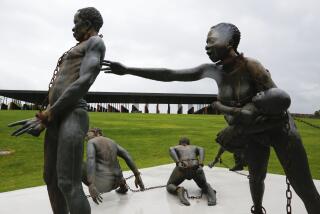Franklin Avenue (1920)
Ken Gonzales-Day’s book “Lynching in the West: 1850-1935” was published by Duke University Press in 2006.
*
My hardest project ever was curating an exhibition of lynching photographs. Not only were the pictures horrific, but I felt that in some ghoulish way I was serving their original purpose, which was to thrill viewers with these outrages. By 1908, lynching photographs were so plentiful that the government banned postcards of them from the mail.
In his alteration of the postcard seen here, Ken Gonzales-Day found a brilliant solution to my quandary. He digitally removed the three victims of this 1920 Santa Rosa lynching, thus forestalling that frisson of self-righteousness modern viewers feel when shown the barbarity of the past. The only telltale imagery that the picture contains, on the lower left, is a shred of the shirt that the mob tore from the one Latino victim’s back before stringing him up.
Gonzales-Day’s intervention does more than spoil the privilege we feel in being able to view such events from a safe historical distance. It implicates us in their erasure from history. (The author tells us that the shirtless victim had “the ignoble distinction of being the last Latino lynched in California.”) A long-buried past as gruesome as this will never truly be laid to rest until the living have dealt with it.
More to Read
Sign up for our Book Club newsletter
Get the latest news, events and more from the Los Angeles Times Book Club, and help us get L.A. reading and talking.
You may occasionally receive promotional content from the Los Angeles Times.






